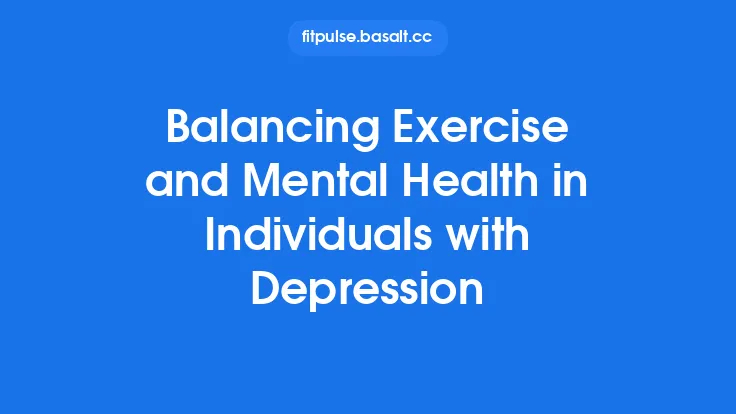Exercise prescription that truly moves people forward rests on more than intuition or tradition. It demands a disciplined blend of the best available scientific evidence, the practitioner’s seasoned judgment, and the unique characteristics and goals of each client. When these elements are aligned, programs become not only effective but also safe, sustainable, and personally meaningful. The following discussion unpacks how to weave research findings into individualized training plans, offering a roadmap that can be applied across settings—from elite performance labs to community‑based gyms.
The Foundations of Evidence‑Based Practice in Exercise Science
Evidence‑based practice (EBP) in exercise science mirrors the model long established in medicine: decisions are guided by the convergence of (1) the best current research, (2) professional expertise, and (3) client values and circumstances. While the hierarchy of evidence (systematic reviews, meta‑analyses, randomized controlled trials, cohort studies, case series, expert opinion) provides a useful filter, the real challenge lies in translating aggregate data into actionable recommendations for a single individual.
Key concepts that underpin EBP for exercise include:
| Concept | Relevance to Prescription |
|---|---|
| Effect size | Quantifies the magnitude of a training stimulus; helps set realistic expectations. |
| Dose‑response relationship | Guides selection of intensity, volume, and frequency to achieve desired adaptations. |
| Minimal clinically important difference (MCID) | Determines the smallest change that matters to the client (e.g., a 5‑kg strength gain that translates to functional independence). |
| External validity | Assesses whether study participants resemble the client in age, health status, training history, etc. |
| Statistical vs. practical significance | A statistically significant result may be trivial in real‑world terms; practitioners must weigh both. |
Understanding these principles equips the practitioner to discern which findings are truly applicable and which should be treated with caution.
Three Pillars: Research, Clinical Expertise, and Client Preferences
- Research Evidence
Provides the what—what training variables have been shown to elicit specific physiological adaptations. For example, meta‑analytic data indicate that 2–3 weekly sessions of moderate‑intensity resistance training (≈70 % 1RM) produce the greatest hypertrophic response in untrained adults.
- Clinical Expertise
Supplies the how—how to interpret data in the context of the practitioner’s experience, knowledge of biomechanics, and familiarity with common pitfalls (e.g., over‑reliance on “one‑size‑fits‑all” protocols).
- Client Preferences & Context
Shapes the why—why a client chooses a particular activity, what resources are available, and what constraints (time, equipment, injury history) exist. Aligning the prescription with these factors enhances adherence and long‑term success.
The integration process is iterative: a practitioner reviews the evidence, matches it against the client’s profile, proposes a plan, monitors outcomes, and refines the approach based on feedback.
Translating Population Data to the Individual
Population‑level studies report average responses, yet individuals often deviate markedly from the mean. To bridge this gap, practitioners can employ several strategies:
- Use of Confidence Intervals (CIs): Rather than relying on a single point estimate, consider the range within which the true effect likely falls. A 95 % CI that spans a wide range signals high variability, prompting a more cautious prescription.
- Responder Analysis: Some studies categorize participants as “responders” or “non‑responders” based on predefined thresholds. When such data are available, they can inform expectations for similar client sub‑groups.
- Individual Baseline Assessment: Establish a robust baseline (strength, aerobic capacity, flexibility, body composition) to detect meaningful change. Baseline values also help calibrate relative intensity (e.g., % of VO₂max or 1RM) rather than absolute loads.
- Adjustment for Moderators: Age, sex, training status, and health conditions often moderate training effects. For instance, older adults may require longer recovery intervals to achieve comparable strength gains to younger counterparts.
By systematically accounting for these factors, the practitioner can tailor the “average” dose to the “individual” need.
Assessing the Client: A Structured Framework
A comprehensive assessment sets the stage for an evidence‑driven prescription. The following framework balances depth with practicality:
- Health Screening
- Medical history (cardiovascular risk, musculoskeletal injuries, chronic disease).
- Current medication use (e.g., beta‑blockers affecting heart rate response).
- Contraindications to specific modalities (e.g., high‑impact plyometrics for osteoporosis).
- Goal Clarification
- Short‑term (e.g., improve 5‑km run time by 5 %).
- Long‑term (e.g., maintain functional independence into the 80s).
- Prioritization (performance vs. health vs. aesthetics).
- Physical Capacity Testing
- Aerobic: VO₂max or submaximal treadmill test.
- Strength: 1RM or 5RM for major lifts.
- Flexibility: Goniometric measures for key joints.
- Mobility & Stability: Functional movement screens.
- Lifestyle & Environmental Context
- Time availability, access to equipment, travel schedule, stress levels, sleep quality.
- Psychosocial Factors
- Motivation, self‑efficacy, previous exercise experiences, social support.
Documenting these dimensions creates a data‑rich profile that can be matched against research‑derived dose‑response curves.
Designing the Prescription: Variables Informed by Evidence
Evidence consistently identifies four primary training variables—intensity, volume, frequency, and progression—as the levers for adaptation. Below is a synthesis of research‑backed guidelines for each, followed by practical translation tips.
1. Intensity
- Resistance Training:
- Hypertrophy: 6–12 RM (≈65–80 % 1RM).
- Strength: 1–5 RM (≥85 % 1RM).
- Endurance: >15 RM (≤50 % 1RM).
- Aerobic Training:
- Moderate intensity: 40–60 % VO₂reserve or HRR.
- Vigorous intensity: 60–85 % VO₂reserve.
- High‑Intensity Interval Training (HIIT): 85–95 % VO₂max for work intervals, 40–50 % for recovery.
Translation: Use the client’s baseline test results to calculate relative loads (e.g., 70 % 1RM) rather than prescribing absolute weights.
2. Volume
- Resistance:
- Total weekly sets per muscle group: 10–20 for hypertrophy, 4–6 for strength.
- Repetitions per set: as per intensity range.
- Aerobic:
- Moderate‑intensity continuous training: 150–300 min/week.
- HIIT: 75 min/week of high‑intensity work (equivalent metabolic load).
Translation: Adjust volume based on recovery capacity; older or clinical populations may start at the lower end of the range.
3. Frequency
- Resistance:
- 2–3 sessions per muscle group per week yields superior hypertrophy compared with once‑weekly sessions, provided volume is equated.
- Aerobic:
- Distributed across 3–5 days to improve adherence and reduce injury risk.
Translation: Align frequency with the client’s schedule; split routines (upper/lower) can increase weekly frequency without extending session length.
4. Progression
- Linear Periodization: Gradual increase in intensity while decreasing volume over 4–12 weeks.
- Undulating Periodization: Frequent (weekly or daily) fluctuations in intensity/volume to stimulate multiple adaptations.
- Auto‑Regulation: Adjust loads based on performance metrics (e.g., RPE, velocity‑based training).
Translation: For beginners, a simple linear model is often sufficient. More experienced athletes may benefit from undulating or auto‑regulated schemes to avoid plateaus.
Progression and Periodization: Evidence‑Guided Strategies
Research comparing periodization models consistently shows that structured variation outperforms non‑periodized training in strength and hypertrophy outcomes. Key take‑aways for practitioners:
- Macrocycle Planning: Define a 12–24‑week overarching goal (e.g., “increase squat 1RM by 15 kg”).
- Mesocycle Segmentation: Break the macrocycle into 3–6 week blocks, each emphasizing a primary focus (e.g., hypertrophy → strength → power).
- Microcycle Detailing: Weekly session plans that align with the mesocycle’s emphasis, incorporating deload weeks (10–20 % reduction in volume/intensity) to facilitate recovery.
Evidence Insight: A meta‑analysis of 30 studies found that mesocycles emphasizing higher intensity (≥80 % 1RM) for 2–3 weeks before a deload yielded greater strength gains than continuous moderate intensity.
Practical Application: For a client with limited training days, a “conjugate” approach—mixing strength, power, and hypertrophy within the same week—can be implemented while still respecting the overall periodization framework.
Monitoring, Feedback, and Adaptive Adjustments
Continuous monitoring transforms a static prescription into a dynamic system. Core monitoring tools include:
- Objective Metrics: Re‑testing of 1RM, VO₂max, body composition, and functional performance every 4–8 weeks.
- Subjective Measures: Session RPE, perceived recovery status (PRS), sleep quality, and mood questionnaires.
- Training Load Quantification: Session‑RPE × duration (AU) or velocity‑based metrics for resistance work.
Feedback Loop:
- Collect Data → 2. Compare to Expected Trajectory (based on effect sizes and MCID) → 3. Identify Deviations (e.g., stalled strength gains) → 4. Adjust Variables (increase volume, modify intensity, incorporate additional recovery) → 5. Re‑evaluate.
Research demonstrates that auto‑regulatory adjustments based on RPE or velocity improve adherence and reduce injury risk, especially in heterogeneous populations.
Special Populations and Contextual Modifiers
While the core principles remain constant, certain groups require nuanced application:
| Population | Key Modifiers | Evidence‑Based Adjustments |
|---|---|---|
| Older Adults (≥65 yr) | Sarcopenia risk, slower recovery, comorbidities | Start at 40–60 % 1RM, 2 sets per muscle group, progress to 70 % 1RM over 8–12 weeks; incorporate balance and functional mobility drills. |
| Pregnant Women | Hormonal changes, joint laxity | Emphasize low‑impact aerobic work (40–50 % VO₂max), moderate resistance (≤60 % 1RM), avoid supine positions after 20 weeks. |
| Clinical Rehabilitation (e.g., post‑ACL) | Tissue healing timelines, pain thresholds | Use sub‑maximal loading (30–50 % 1RM) with high repetitions, focus on neuromuscular control, progress to higher intensities only after meeting functional milestones. |
| Athletes in Seasonal Sports | Competition calendar, sport‑specific demands | Align periodization with competition phases (pre‑season hypertrophy, in‑season power/maintenance). |
In each case, the practitioner must weigh the risk‑benefit ratio and may need to consult discipline‑specific guidelines (e.g., ACSM’s Clinical Exercise Guidelines) to ensure safety.
Common Pitfalls When Applying Research to Individuals
- Overgeneralization: Assuming a protocol effective for elite athletes will work for sedentary clients.
- Neglecting Individual Variability: Ignoring responder/non‑responder patterns and persisting with a failing program.
- Relying Solely on Quantitative Data: Discounting qualitative cues such as client motivation or perceived enjoyment, which heavily influence adherence.
- Static Prescriptions: Failing to adjust variables in response to monitoring data, leading to plateaus or overtraining.
- Misinterpreting Statistical Significance: Implementing a change that is statistically significant but clinically trivial (e.g., a 0.5 % VO₂max increase).
Awareness of these traps helps maintain the integrity of the evidence‑based process.
A Practical Workflow for Evidence‑Based Prescription
- Gather Baseline Data – Health screen, goal interview, physical testing.
- Search the Evidence – Identify high‑quality studies that match the client’s profile (population, outcome, intervention).
- Extract Dose‑Response Parameters – Determine recommended intensity, volume, frequency, and progression for the targeted outcome.
- Map to Client Context – Adjust parameters for time constraints, equipment availability, and personal preferences.
- Design the Program – Create a periodized plan with clear session outlines.
- Implement with Auto‑Regulation – Use RPE or velocity feedback to fine‑tune loads each session.
- Monitor & Record – Track objective and subjective metrics weekly.
- Analyze & Adapt – Every 4–8 weeks, compare progress to expected effect sizes; modify the plan accordingly.
- Re‑Educate the Client – Communicate rationale for changes, reinforcing the evidence‑based nature of the approach.
Following this loop ensures that each client receives a scientifically grounded, personalized, and adaptable training experience.
Future Directions and Maintaining Relevance
Even as the field evolves, the core tenet of integrating research with individual needs will remain evergreen. Practitioners can stay ahead by:
- Continuously Updating Knowledge: Subscribe to reputable journals and professional societies that synthesize research into practice guidelines.
- Participating in Communities of Practice: Engage with peer groups to discuss case studies and share implementation experiences.
- Leveraging Pragmatic Research: Incorporate findings from real‑world effectiveness studies that examine interventions in typical gym settings.
- Embracing Lifelong Learning: Pursue advanced certifications that emphasize evidence‑based methodology and critical appraisal skills.
By committing to this cycle of learning, application, and reflection, exercise professionals can ensure that their prescriptions remain both scientifically sound and deeply attuned to the people they serve.





